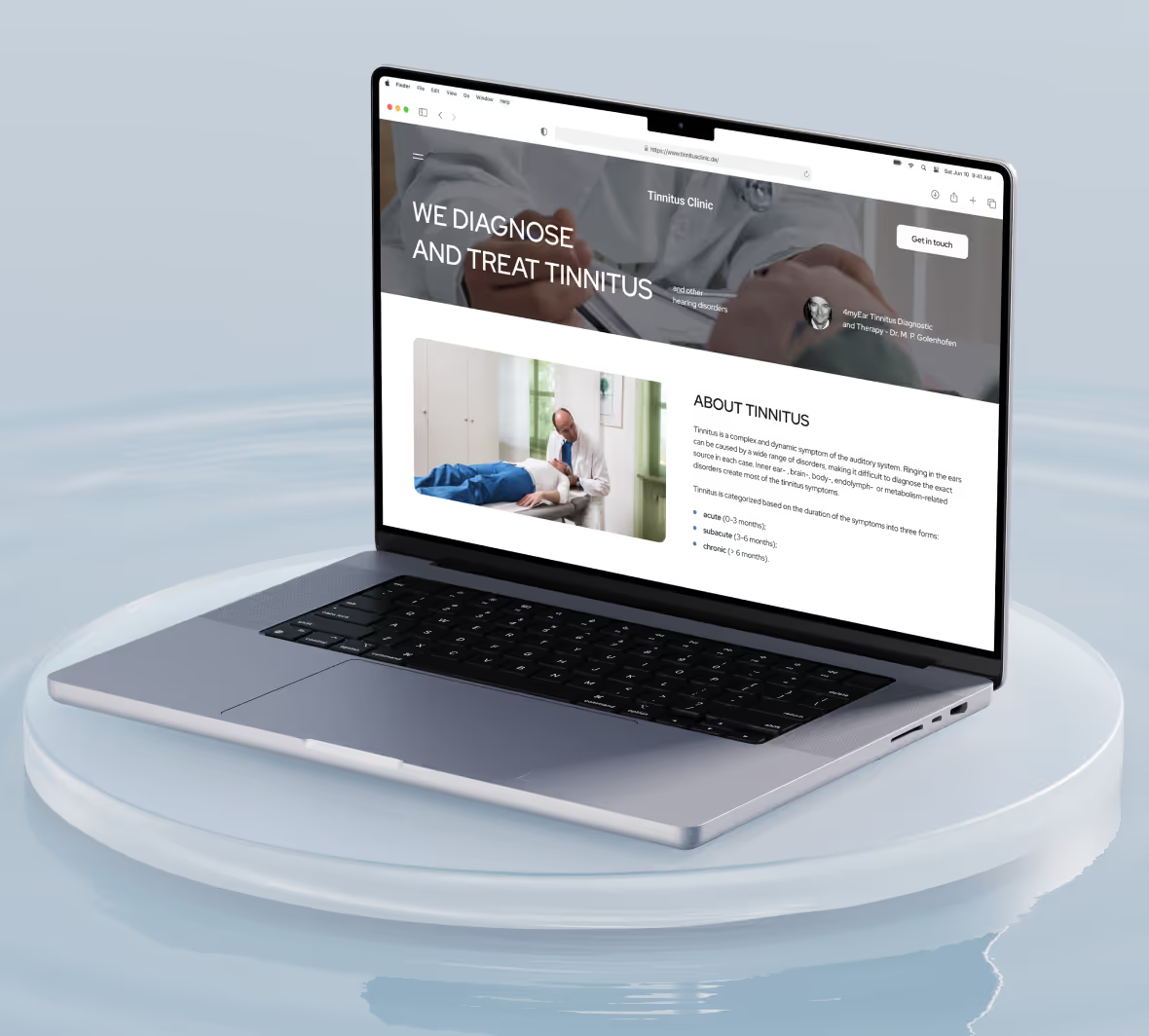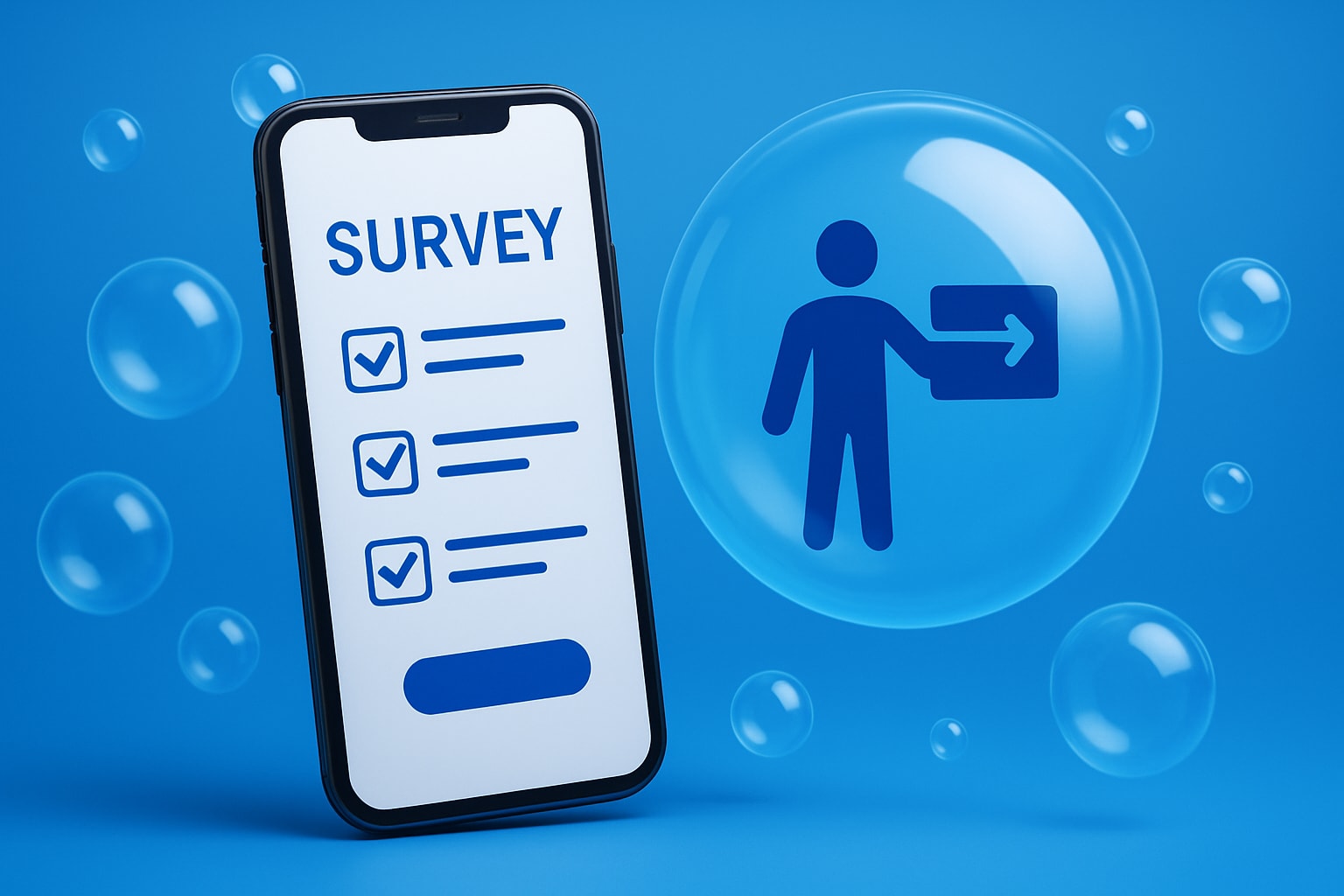
You’re ready to launch your product or at least get a better sense of its viability in the market. But first, you need to sort through the details. The product you’re imagining may not be what the market wants. Creating a product that helps you determine your final product may seem counterintuitive, but that’s precisely what a minimum viable product (MVP) or No Code MVP does.
An MVP enables you to collect data on what your target audience wants. Based on your intuition or assumptions, this can differ from what you consider they want. Before you build your MVP, you want to distinguish between a prototype and a minimum viable product to ensure you’re on the right track.
What's The Difference Between a Minimum Viable Product vs Prototype

Consider you’re building a car. A car prototype might include a working engine but no wheels, or perhaps it has wheels, but the interior is missing. The goal of prototyping the car, my analogy goes, is to identify issues, gather feedback, and make adjustments before full-scale production begins. An MVP, on the other hand, would be a functioning vehicle that can drive and navigate but lacks many of the features found in a fully developed model. There’s a good chance that model would be unrecognizable to the casual observer, but it would get you to your destination nonetheless.
An MVP’s purpose is to get you there. While prototypes and MVPs share similarities, they have distinct differences that serve different purposes in the product development lifecycle. Understanding these distinctions will help you navigate bringing your business idea to life.
MVPs vs Prototypes: Purpose and Objective
The most fundamental difference between MVPs and prototypes is their purpose and objective. A prototype is primarily used for exploring and validating concepts. Its primary purpose is to demonstrate ideas, test design elements, and gather user feedback early in development. Prototypes focus on aesthetics and functionality, allowing teams to visualize and adjust their concepts based on user interactions and insights.
Conversely, the MVP aims to validate a product's core functionality in the market. The product version includes only the essential features necessary to satisfy early adopters and gather feedback for further development. The MVP focuses on delivering a usable product that solves a specific problem, allowing businesses to test their hypotheses in real-world conditions.
MVPs vs. Prototypes: Development Stage
Another critical area where MVPs and prototypes differ is the development stage. Prototypes are often created in the initial stages of product development. They are not fully functional products; they can be low-fidelity (like sketches or wireframes) or high-fidelity (interactive models).
Prototyping is an iterative process that leads to adjustments and refinements based on testing and feedback. The MVP is developed after the prototype stage, building on the feedback gathered from prototypes to create a usable product that can be released to a limited audience. The MVP focuses on the essential features that deliver value to users and facilitate learning about the market's needs.
MVPs vs Prototypes: Audience
The audiences for prototypes and MVPs also differ significantly. Prototypes are typically intended for internal stakeholders, such as design teams, product managers, and investors. They communicate ideas and gather input from the team and potential users before significant resources are invested in full-scale development.
The MVP, in contrast, is aimed at early adopters and actual users. It is designed to be tested in natural market conditions, allowing businesses to collect data on user behavior, preferences, and pain points, which informs further product iterations.
MVPs vs. Prototypes: Functionality
Functionality is another area where MVPs and prototypes differ. Prototypes often need more complete functionality. They may include mock-ups of user interfaces and interactions but offer a partial working product version.
The emphasis is on design and usability rather than comprehensive features. The MVP includes only the most critical features necessary for solving the core problem it addresses. While it is a functional product, it may lack advanced features or refinements that would be present in later versions.
MVPs vs Prototypes: Iteration and Feedback
The iterative processes of prototypes and MVPs also yield differing types of feedback. Prototypes' feedback primarily focuses on design elements, user experience, and overall feasibility. The iterative process of prototyping allows for numerous revisions and adjustments based on stakeholder input before moving on to more concrete development.
Feedback on the MVP centers around usability, market fit, and user satisfaction. This feedback helps determine the product's viability and informs subsequent updates or features, leading to future iterations based on accurate user data.
MVPs vs Prototypes: Outcome and Goals
Finally, MVPs and prototypes differ in terms of their goals and outcomes. Prototyping aims to explore ideas and concepts, minimize risks by identifying potential issues early, and ensure the product design aligns with user expectations. Prototyping fosters creativity and collaboration among teams, enabling them to brainstorm and develop innovative solutions.
The MVP aims to validate the business model and gather insights about market demand, user preferences, and product performance. By launching an MVP, businesses can test their assumptions, adjust their strategies based on honest feedback, and reduce the risk of investing heavily in a product that may not meet market needs.
Kickstart Your Journey to a Minimum Viable Product Instead of a Prototype
Bringing your MVP to life can seem daunting. Working with a no-code development agency can help you take your first step forward. We are a no-code development agency tailored for non-technical entrepreneurs looking to launch B2B SaaS or service web apps quickly. Our expertise lies in using tools like Bubble.io, Xano.com, and Webflow to deliver MVPs within a month.
Why you should work with us: We offer rapid development speed, cost-effectiveness compared to traditional methods, scalable and secure solutions, and full-service support from design to post-launch. We're ideal for founders who've experienced lengthy traditional development cycles or need a technical co-founder. Our approach solves common pain points like missing tech skills, no-code scalability, security concerns, and the desire to focus on business while we handle the tech.
With Minimum Code, you can finally bring your long-held business idea to life quickly and efficiently without breaking the bank. Bring your long-held business ideas to life with us, and get a free product discovery & scoping for your app idea today!
Related Reading
When to Use Implement a Minimum Viable Product vs Prototype

Initial Concept Validation: Prototype or MVP?
A prototype is your best option if you are in the early stages of product development and need to explore ideas, validate design concepts, or identify potential issues. This lets you gather feedback on aesthetics, user experience, and functionality before committing to a complete build.
Focus
Emphasize user testing to refine your concept and ensure it aligns with user expectations.
Testing Market Demand: Prototype or MVP?
An MVP is ideal once you have validated your concept through prototyping and are ready to test market demand. The MVP lets you release a functional product with core features to real users, gathering critical feedback on its performance and market fit.
Focus
Aim to understand user behavior, pain points, and whether the product solves the intended problem.
Resource Allocation: Prototype or MVP?
Prototypes are efficient if you have limited resources or need to communicate ideas with stakeholders without significant investment. They can be created relatively quickly and inexpensively, providing visual representation and facilitating discussions about design and functionality.
Focus
Use prototypes to ensure all stakeholders are aligned before the MVP stage.
Development Timeline: Prototype or MVP?
If you are under pressure to launch and want to start generating user feedback while continuing to iterate on the product, an MVP is the way to go. This allows you to enter the market sooner and build a user base, essential for securing funding or support.
Focus
Prioritize the delivery of core functionalities that meet user needs while planning for future enhancements.
Feedback and Iteration: Prototype or MVP?
Prototypes are valuable during the design phase when you anticipate needing significant feedback to adjust your approach. They enable you to explore and refine multiple concepts based on stakeholder insights.
Focus: Create a feedback loop with users and team members to iterate on the design before launching it in the market.
Long-Term Goals: Prototype or MVP?
An MVP is more suitable if your long-term strategy involves continual user engagement and product evolution. It establishes a foundation for ongoing development based on real-world usage and customer feedback.
Focus
Gather insights that inform future updates and enhancements, ensuring the product evolves to meet market demands.
Pros and Cons of Using MVPs and Prototypes

The Advantage of MVPs: Why Real User Feedback Matters
An MVP allows you to collect valuable feedback from actual users. This insight can guide your product development and help refine features based on what users truly want. Instead of relying on assumptions, you can make informed decisions backed by data.
When you launch an MVP, you can learn what your target audience likes and dislikes about your product. You can also discover any unmet needs your product may fulfill. This information can significantly improve the next iteration of your product to ensure it appeals to your target audience.
The Advantage of MVPs: Market Validation
Launching a functional product can test market demand and validate whether your solution resonates with potential customers. This is vital for securing further investment or support. An MVP helps you show investors that you’re on the right track and that your product has the potential for success. Instead of only pitching a business idea, you can demonstrate how your product performs in the real world. Investors typically feel more comfortable funding projects with proven viability than abstract concepts.
The Advantage of MVPs: Faster Time to Market
MVPs focus on core features, allowing quicker launches than fully developed products. This can give you a competitive edge in fast-moving industries. The sooner you get your product in front of users, the sooner you can start collecting feedback for improvements. Early feedback can help steer the direction of your product so you can better meet the needs of your target audience.
The Advantage of MVPs: Cost-Effective
Unlike a whole product, an MVP requires fewer resources and can be developed more rapidly, minimizing initial investment. An MVP will look different for every product, but the concept remains the same. By focusing on core functionalities, you can develop an MVP that meets the needs of your target audience without breaking the bank.
The Advantage of MVPs: Iterative Improvement
Once in the market, you can iterate on the product based on user feedback, making continuous improvements that align with user needs and preferences. An MVP doesn’t just help you get to the next step of product development. It lays the groundwork for future iterations of your product so it can evolve into a fully developed solution that meets the needs of your target audience.
The Disadvantage of MVPs: Limited Functionality
Because MVPs only include essential features, they may need to provide a complete user experience. If critical functionalities are missing, this can lead to user frustration. When you launch an MVP, you must communicate to users that they are helping you test the product so you can improve it. This will help manage their expectations and encourage valuable feedback to help you make informed decisions about product development.
The Disadvantage of MVPs: Risk of Negative First Impressions
If the MVP doesn’t meet user expectations or has significant issues, it can harm the brand’s reputation and affect long-term success. To mitigate this risk, prioritize building a quality MVP. The goal isn’t to launch a product full of bugs or with a confusing user interface. Instead, focus on creating a solid foundation for your product that can be improved over time.
The Disadvantage of MVPs: Dependency on User Feedback
MVPs heavily rely on user feedback for future development. If feedback is lacking or not representative of the broader market, it can lead to misguided improvements. To avoid this pitfall, test your MVP with a diverse user group that reflects your target audience. Additional market research can help you understand user priorities before testing your product.
The Advantage of Prototypes: Exploration and Validation of Ideas
Prototypes allow teams to explore and validate design concepts before investing significant resources into development, helping to identify potential issues early. Like an MVP, prototypes can be tailored to fit the needs of different products. They can also take many forms, from sketches to interactive prototypes. No matter the format, prototypes are a great way to visualize ideas and get feedback before moving to the development phase.
The Advantage of Prototypes: Visual Representation
Prototypes provide a tangible representation of ideas, making communicating concepts to stakeholders and gathering feedback easier. Prototypes can help facilitate discussions and uncover valuable insights to inform your product development process, whether you're looking for input from potential users or internal team members.
The Advantage of Prototypes: Cost and Time Efficiency
Creating a prototype can often be less resource-intensive than developing an MVP, especially in the early stages of product development. Because prototypes focus on visualizing and validating ideas rather than core functionalities, they can typically be produced quickly and at a lower cost. Building an MVP takes time, money, and resources and can be incredibly costly if your product requires complex coding or development.
The Advantage of Prototypes: User-Centric Design
Prototyping encourages user involvement in the design process, fostering a user-centric approach that can lead to better final products. You can often perform usability testing on your prototype to gauge user reactions and preferences. This helps you uncover any potential issues with the design before moving on to the development phase.
The Disadvantage of Prototypes: Lack of Functionality
Prototypes often need to be functional products. They may only illustrate design aspects without offering the usability of a complete product, which can limit the depth of feedback. Because of this, it’s essential to communicate with users that a prototype is not a finished product. Instead, their goal is to help visualize ideas and test functionality in a low-risk environment.
The Disadvantage of Prototypes: Misleading Expectations
If stakeholders confuse prototypes with final products, it can lead to unrealistic expectations about the product’s capabilities and timelines. This is especially true for interactive prototypes that closely resemble how a finished product will operate. To avoid this, clarify the purpose of a prototype to everyone involved in your project.
The Disadvantage of Prototypes: Iterative Limitations
While prototypes can be iterated upon, continuous changes may lead to scope creep, making managing project timelines and costs harder. Before creating a prototype, it’s important to set clear goals and objectives. This will help you stay focused on your initial aims and avoid getting sidetracked by new ideas that may extend your project’s timeline.
How to Choose Between an MVP and a Prototype

The objective of Development: What's Your Goal?
Choosing between a prototype and a minimum viable product largely rests on your goals for product development. With a prototype, your aim will likely be to test a concept, gather insights on design, or assess user interactions without needing a fully functioning product. A minimum viable product (MVP) focuses on delivering a functional version of your product that solves a core problem for users. This approach can help you quickly validate a business idea or new market opportunity.
Target Audience: Who Are You Trying to Impress?
Consider your end-users and their expectations. If your audience expects a product that delivers a specific function, creating an MVP will help meet those expectations and refine your offering based on fundamental user interactions. A prototype is effective if your target audience comprises stakeholders, investors, or internal teams who must understand the product's vision. It lets you visually communicate your idea and gather feedback before developing it.
Time Constraints: Do You Need to Ship Fast?
An MVP can be built relatively quickly, depending on your resources and team expertise. If you need to launch something promptly to test market viability, an MVP is the way to go. Rapid development allows for swift iteration and learning from user feedback. While prototypes can also be created quickly, they focus more on design and user experience than functionality.
Suppose time is less critical, and you want to ensure the design is user-friendly. In that case, a prototype allows for iteration on visuals and user interactions without the pressure of delivering a fully functional product.
Budget Considerations: What Can You Afford?
Developing an MVP typically requires a larger budget as it needs to include essential features and functionality. However, it is often more cost-effective in the long run, leading to market validation and informed iterations based on real-world feedback. Creating a prototype can be less expensive, mainly if it focuses on design elements rather than full functionality. However, if it does not lead to further development or validation, it may not provide a good return on investment.
Level of Certainty About the Concept: Do You Know What You're Building?
If you have confidence in your idea but need to test its viability, an MVP helps you learn from real users. This approach reduces the risk of launching a new product by focusing on the most critical aspects. If you are still uncertain about your concept and need to explore various designs or functionalities, a prototype allows for flexibility and experimentation. It helps you refine your ideas without committing to development costs.
Feedback Mechanisms: What Kind of Insights Do You Need?
An MVP allows for robust user feedback, providing insights into usability, functionality, and market fit. This feedback is crucial for making necessary adjustments and enhancements before full-scale development. Feedback on prototypes is generally qualitative, focusing on user experience and design preferences. While it can guide your growth, it may need to provide insights into how well a product will perform in the market.
How Prototyping Works in Product Development

Understanding Prototypes: What Are They, and Why Do You Need Them?
A prototype is an early model or version of a product that is used to test and validate concepts, designs, and user interactions before the final product is built. It serves as a tangible representation of an idea, allowing stakeholders to visualize and experience it. Prototypes range from simple paper sketches to interactive digital models or functioning product versions. They help designers and developers identify potential issues, gather user feedback, and refine the product's functionality and design.
Types of Prototypes: Which Do You Need?
Low-Fidelity Prototypes
These are basic representations of the product, often created using simple materials like paper, cardboard, or digital wireframes. Low-fidelity prototypes are cost-effective and quick to produce, making them ideal for initial brainstorming and idea validation. They are useful for gathering early feedback on layout and functionality without getting bogged down in details.
High-Fidelity Prototypes
High-fidelity prototypes are more advanced and resemble the final product regarding functionality and design. These prototypes can include interactive elements, accurate data, and a closer user interface (UI) representation. They allow for more detailed testing and feedback on user experience (UX) and design aspects.
Functional Prototypes
These prototypes include working elements of the final product, demonstrating how specific features will function. They are typically used to validate technical feasibility and assess how well the product meets user needs. Functional prototypes are valuable for demonstrating the product's capabilities to stakeholders and gathering feedback for further development.
Wizard of Oz Prototypes
In this method, a human operator simulates the product's functionality behind the scenes. Users interact with the prototype as if it were fully functional, allowing developers to test specific features without building the entire product. This approach is beneficial for testing complex systems or features that require significant development resources.
Benefits of Prototyping: Why Invest Your Time and Resources?
Enhance User Engagement
Prototypes foster active user participation, allowing users to provide feedback based on their experiences. This engagement leads to more meaningful insights into user preferences and behaviors.
Identify Problems Early
By visualizing the product concept, teams can identify potential design flaws, usability issues, and technical challenges before investing significant time and resources in development.
Improve Communication
Prototypes serve as a communication tool between teams, stakeholders, and users. They help articulate ideas and concepts more effectively, ensuring everyone is on the same page regarding the product vision.
Informed Decision-Making
With a tangible representation of the product, stakeholders can make informed decisions about design, functionality, and resource allocation based on honest user feedback and testing results.
Reduce Development Costs
Investing time in prototyping can save costs by minimizing the need for extensive rework during later development stages. Identifying issues early on prevents costly mistakes and helps streamline the development process.
Best Practices for Prototyping: How to Get the Most Out of Your Prototypes
Define Objectives
Clearly outline the prototype's goals. Determine what aspects you want to test or validate, such as functionality, design, user interactions, or market fit.
Keep It Simple
Focus on core functionalities rather than building a fully polished version. Low-fidelity prototypes are often more effective for gathering initial feedback.
Iterate Based on Feedback
Use the feedback gathered from user testing to refine and improve the prototype. Iteration is crucial in developing a successful product.
Involve Users Early
Engage users throughout the prototyping process. Their insights will help you create a product that meets their needs and expectations.
Document Insights
Record feedback, observations, and insights from user testing. This documentation will guide further development and decision-making.
How Minimum Code Bridges the Gap Between MVP and Prototype

Minimum code development streamlines creating a minimum viable product (MVP), a prototype, or both. This no-code approach lets you build both simultaneously, ensuring a smooth transition from concept to market-ready product. Creating MVP with minimum code eliminates redundancies and helps you efficiently test your business idea while managing costs.
Comprehensive Solutions for Non-Technical Founders
Many non-technical entrepreneurs need help in the development process. They often feel stuck between needing a prototype to visualize their ideas and an MVP to validate them. Minimum Code addresses this by leveraging platforms like Bubble.io, Xano.com, and Webflow.
It allows founders to create fully functional prototypes that can evolve into MVPs without extensive coding knowledge. This approach eliminates the traditional barriers to entry in tech development, allowing you to focus on your business vision.
Cost-Effectiveness and Speed
Choosing between an MVP and a prototype often comes from budget constraints and time limitations. Minimum Code offers a cost-effective solution by providing rapid development cycles that can deliver both a prototype and an MVP within a month. This means you can efficiently test your business idea while managing costs, leading to faster time to market and a higher chance of success.
Integrated Feedback Mechanisms
In the traditional development cycle, gathering feedback on a prototype often delays the launch of an MVP. Minimum Code allows us to implement features, collect user feedback, and make real-time adjustments. This iterative process ensures that your prototype and MVP are continuously refined based on user input, enhancing the final product's quality and market fit.
Focus on Scalability and Security
Minimum Code prioritizes building scalable and secure solutions from the start. When creating both prototypes and MVPs, you can rest assured that your product is designed to grow with your user base. This focus on scalability helps prevent potential pitfalls when transitioning from a prototype to a more robust product, ensuring your business can adapt and thrive in a competitive market.
Get a Free Product Discovery & Scoping for Your App Idea Today
When you have a business idea, building a fully fleshed-out product to include every function and feature you envision can be tempting. However, this approach can result in a lengthy development process that can take years to complete.
Instead of this traditional approach, starting with a no-code minimum viable product will help you get to market faster, allowing you to begin to learn what your users want. A no-code MVP will also allow you to make the right decisions for your project based on actual data rather than assumptions.
Related Reading

Ready to build your product?






.avif)


